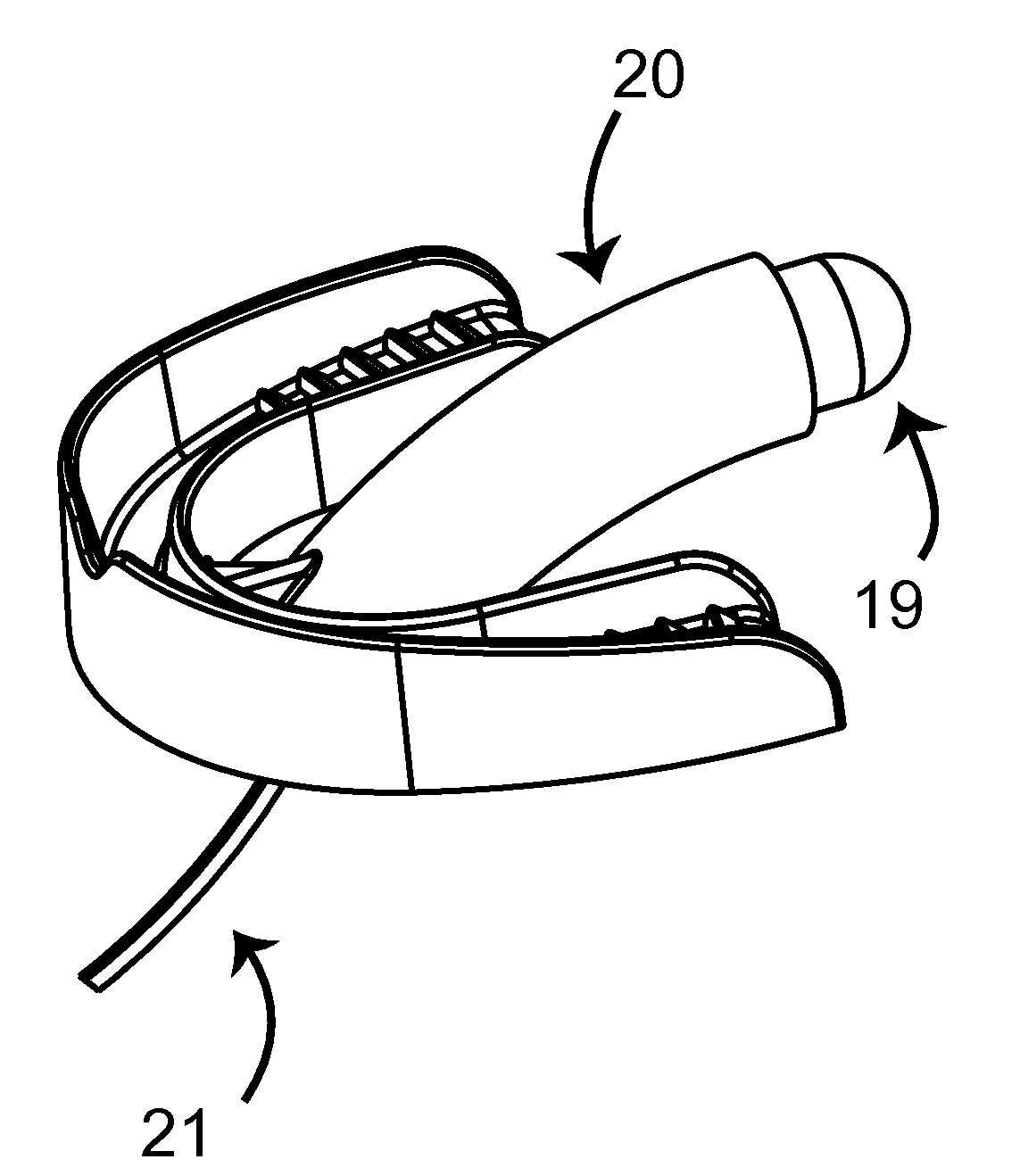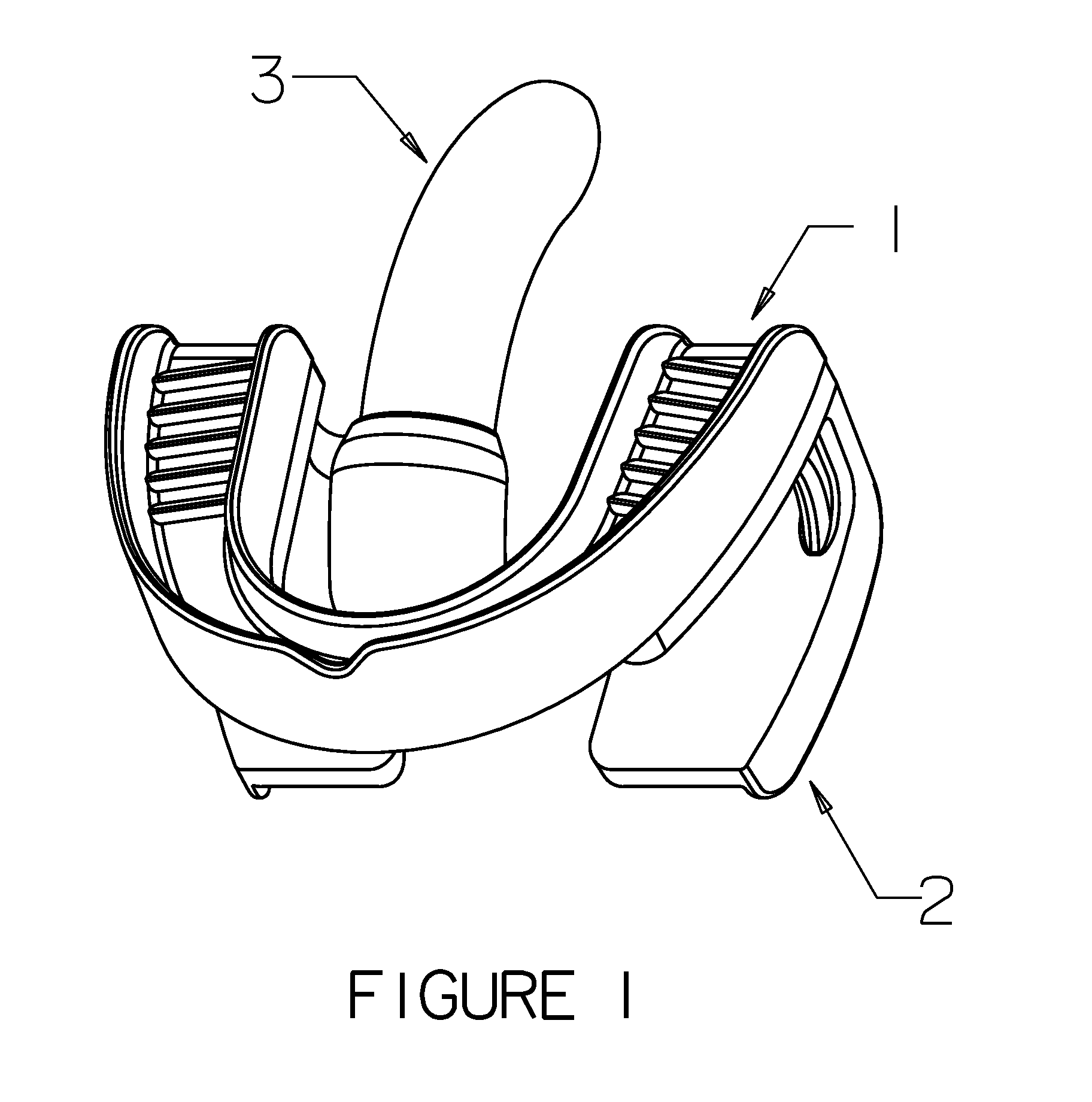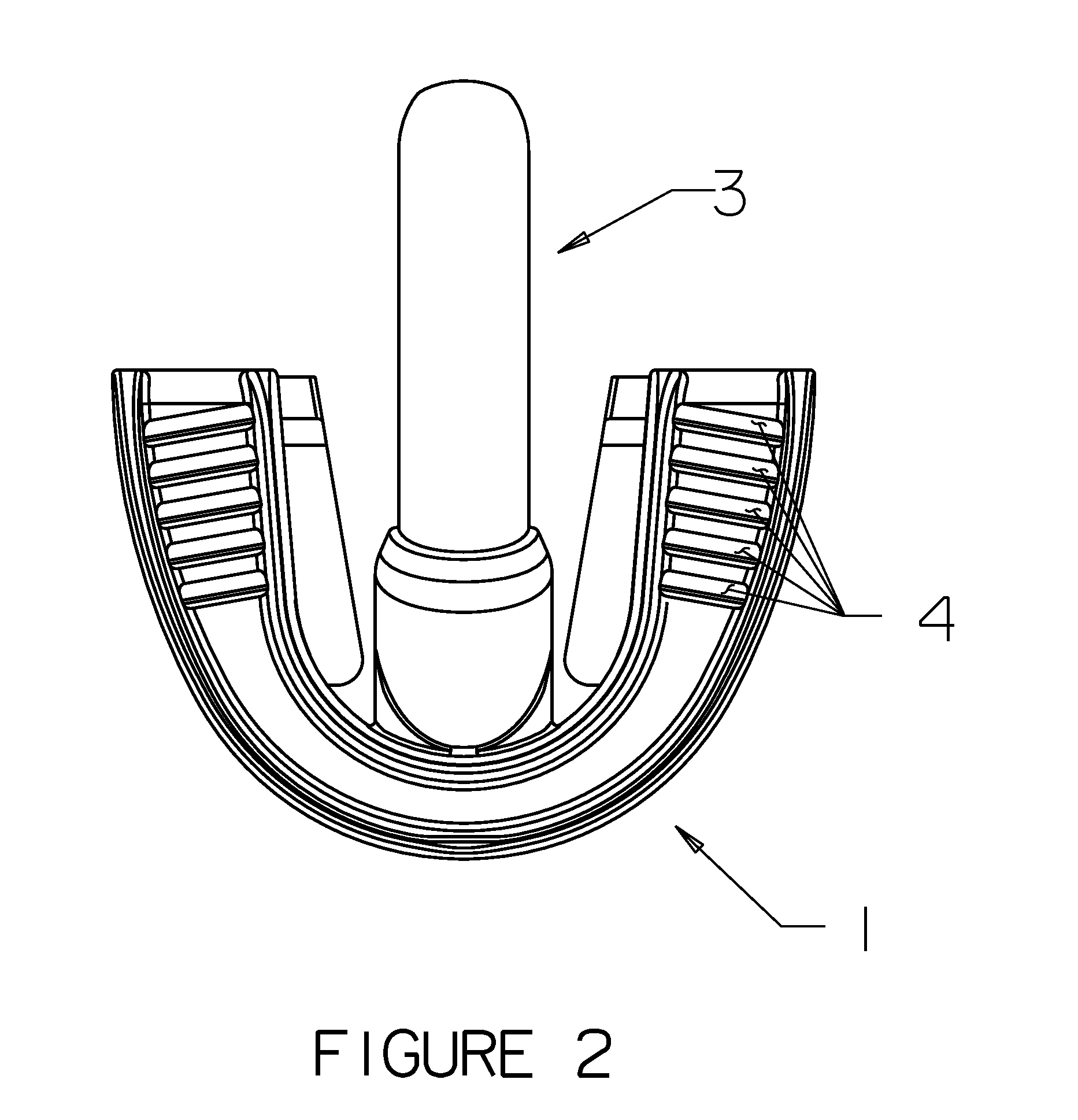ROTICAM: An Orotracheal Guide with Camera
- Summary
- Abstract
- Description
- Claims
- Application Information
AI Technical Summary
Benefits of technology
Problems solved by technology
Method used
Image
Examples
first embodiment
[0076]In embodiments in which the guide of a ROTIG device is replaced by a “camera mount”, as shown in FIGS. 8 to 11, the camera mount is attached to upper dental arch at the proximal end of the camera mount. A camera is attached to the camera mount at the distal aspect of the camera mount by a rigid connection or by a gimbal, Y (pitch) stage, X / Y (yaw / pitch) stage, or X / Y / Z (yaw / pitch / roll) stage, a “memory” elastomeric section (i.e., a section that retains an orientation created by manipulation of the elastomeric section), joint(s), or other means known in the art. A camera mount is attached to the distal aspect in the incisor area of upper dental arch tray, in the same manner described above for the attachment of the guide to the upper dental arch tray of a ROTIG device not equipped with a camera. In a camera mount, the camera is not separable from the camera mount without the use of tools. In this embodiment, the camera mount can house one or more cameras, sensors, one or more b...
second embodiment
[0077]In the camera mount, the camera mount is a curved cylinder into which a ROTIG camera insert is inserted. The ROTIG camera insert typically has a twist-lock or snap fit in the camera mount and can typically be removed without the use of tools. The ROTIG camera insert can house one or more cameras, sensors, one or more batteries, image storage, wireless transmission systems, etc. ROTIG camera inserts are typically reusable and have easily sterilized exteriors, while the camera mount and upper dental arch tray are typically disposable. A camera in a ROTIG camera insert is installed within the distal region of a ROTIG camera insert by a rigid connection or by a gimbal, Y (pitch) stage, X / Y (yaw / pitch) stage, or X / Y / Z (yaw / pitch / roll) stage, a “memory” elastomeric section (i.e., a section that retains an orientation created by manipulation of the elastomeric section), joint(s), or other means known in the art.
[0078]In embodiments of ROTICAMs that include an image display (typically...
PUM
 Login to View More
Login to View More Abstract
Description
Claims
Application Information
 Login to View More
Login to View More - R&D
- Intellectual Property
- Life Sciences
- Materials
- Tech Scout
- Unparalleled Data Quality
- Higher Quality Content
- 60% Fewer Hallucinations
Browse by: Latest US Patents, China's latest patents, Technical Efficacy Thesaurus, Application Domain, Technology Topic, Popular Technical Reports.
© 2025 PatSnap. All rights reserved.Legal|Privacy policy|Modern Slavery Act Transparency Statement|Sitemap|About US| Contact US: help@patsnap.com



